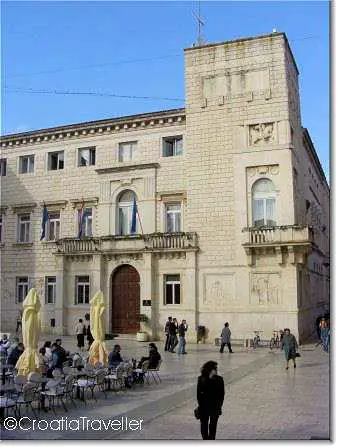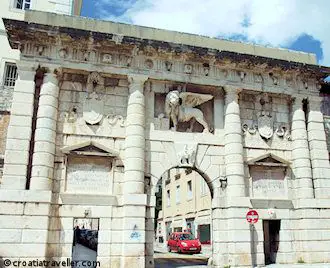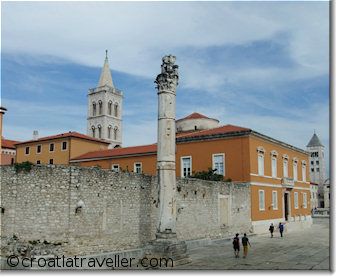Archaeologists have found traces of a Neolithic settlement which dates back to the 9th century BC on the outskirts of present-day Zadar. Zadar was conquered by the Romans as part of their great advance to the east coast of the Adriatic which began at the end of the 3rd century BC. It took them 200 years to subdue the native Illyrians but they did and by the middle of the 1st century BC Zadar (known as Iadera to the Romans) achieved the status of a Roman municipality and later a Roman colony. The town was organised according to the typical Roman street system with a rectangular street plan, a forum, thermae, a sewage and water supply system that came from lake Vrana.
[Explore the Roman ruins of Zadar]
When the Holy Roman Empire split, Zadar became part of the Eastern Roman Empire (Byzantium). It became the capital of Byzantine Dalmatia and retained this status to the end of WWI.
Around the 6th and 7th centuries, Slavs migrated to the region and in the reign of King Tomislav Zadar took part in the synods in Split. Nevertheless, Zadar continued to use Glagolitic in the liturgy instead of Latin.
When Venice moved into the eastern Adriatic coast at the beginning of the 9th century, Zadar was clearly a desirable target. From the mid-twelfth to the mid-fourteenth century Zadar put up a mighty resistance to Venetian domination. Venice conquered Zadar several times but the town always managed to throw them out. In 1202, for example, the Venetians bribed the Crusaders with its fleet on the condition that they conquer Zadar. Following a lengthy siege, the town fell but threw the Venetians out once again only 40 years later. The Venetians returned and managed to establish a precarious control over their Adriatic prize.
In the 15th century Zadar faced a new menace in the form of Turkish attacks. Beginning in the second half of the century repeated Turkish-Venetian warfare and Turkish attacks on the town devastated the region. Most of Zadar's walls and towers were erected to protect against the Turks and they are still standing today.
After the fall of Venice in 1797, Austrian troops moved into Zadar. Despite the hope of being united with the rest of Croatia, Zadar and the whole of Dalmatia were subjected to direct rule from Vienna. After a brief period of French occupation, the Austrians returned and stayed until 1918.
At the end of WWI, Italians occupied Zadar and their possession was confirmed by the Treaty of Rapallo in 1920. The treaty gave Zadar to Italy as a small enclave within the Kingdom of Serbs, Croats and Slovenes (later Yugoslavia). The increasingly fascistic Italian government implemented a program of forced Italianization on Zadar (and its other territories) that lasted until Italy's capitulation in 1943.
German troops moved into Zadar and the town was heavily bombed in 1944, destroying almost 60% of the peninsula. Tito's partizans arrived in Zadar 31 October 1944 and Zadar became part of Yugoslavia.
Zadar suffered badly in the break-up of former Yugoslavia. The city was shelled by Serbian forces from 1991 to 1993, cutting the city off from both Zagreb and the surrounding region. Much was destroyed and the city's safety remained precarious until the Dayton Accords ended the Yugoslav war in 1995.
Join the Croatia Traveller Group
Recommended Experiences
©CroatiaTraveller 2005-2024 All rights reserved




 Zadar
Zadar  Things to See in Zadar
Things to See in Zadar Zadar Accommodation
Zadar Accommodation Croatian History
Croatian History Dalmatian History
Dalmatian History